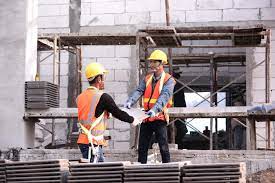The construction industry, a cornerstone of global economic bricklayer construction development, has undergone significant transformation in recent years, primarily driven by the urgent need for sustainability. This shift is not merely a trend but a fundamental change in how buildings are designed, constructed, and maintained. Sustainable construction practices aim to reduce the environmental impact of buildings, promote energy efficiency, and enhance the quality of life for occupants. This article explores the evolution of these practices, their current applications, and their long-term benefits.
The Evolution of Sustainable Construction
Sustainable construction, also known as green building, has its roots in the environmental movements of the 1960s and 1970s. Initially, the focus was on reducing energy consumption and using renewable resources. The oil crises of the 1970s further highlighted the need for energy efficiency, leading to the development of more stringent building codes and standards.
The 1990s marked a significant turning point with the introduction of the Leadership in Energy and Environmental Design (LEED) certification by the U.S. Green Building Council (USGBC). LEED provided a comprehensive framework for identifying and implementing practical and measurable green building design, construction, operations, and maintenance solutions. This certification system catalyzed the widespread adoption of sustainable practices globally.
Key Principles of Sustainable Construction
Sustainable construction is guided by several key principles aimed at reducing the environmental footprint of buildings:
- Energy Efficiency: This involves designing buildings that require less energy for heating, cooling, and lighting. Techniques include improved insulation, energy-efficient windows, and the use of renewable energy sources like solar and wind power.
- Water Conservation: Implementing systems that reduce water consumption, such as low-flow fixtures, rainwater harvesting, and wastewater recycling, is crucial in sustainable construction.
- Material Selection: Using sustainable materials that are recycled, locally sourced, or have a low environmental impact during their lifecycle helps reduce the overall environmental footprint. Examples include bamboo, reclaimed wood, and recycled metal.
- Indoor Environmental Quality: Ensuring good air quality, natural lighting, and thermal comfort enhances the health and well-being of building occupants. This can be achieved through proper ventilation systems, non-toxic materials, and ergonomic design.
- Waste Reduction: Sustainable construction practices aim to minimize waste through efficient design, recycling, and reusing materials. Construction waste management plans are now a standard part of many building projects.
Current Applications of Sustainable Practices
The application of sustainable construction practices varies widely, from residential buildings to large-scale commercial projects. Some notable examples include:
- The Edge, Amsterdam: This office building is often cited as one of the greenest buildings in the world. It features a highly efficient energy management system, rooftop solar panels, and a rainwater harvesting system. The building’s design maximizes natural light, reducing the need for artificial lighting.
- One Central Park, Sydney: This mixed-use development incorporates vertical gardens, a central thermal plant, and a heliostat to reflect sunlight into shaded areas. The project has received numerous awards for its innovative approach to sustainability.
- Bosco Verticale, Milan: These residential towers integrate more than 900 trees and 20,000 plants into their design, providing a natural cooling effect and improving air quality. The project demonstrates how urban buildings can contribute to biodiversity and environmental health.
Benefits of Sustainable Construction
The benefits of sustainable construction extend beyond environmental impact, encompassing economic and social dimensions as well:
- Economic Savings: Energy-efficient buildings reduce utility costs for owners and tenants. Additionally, green buildings often have higher property values and lower vacancy rates.
- Environmental Protection: Sustainable buildings help reduce greenhouse gas emissions, decrease reliance on non-renewable resources, and minimize waste. This contributes to broader efforts to combat climate change.
- Health and Well-being: Improved indoor environmental quality leads to better health outcomes for occupants. Studies have shown that green buildings can enhance productivity and reduce absenteeism in workplaces.
- Resilience: Sustainable construction practices often incorporate features that make buildings more resilient to natural disasters and climate change impacts, such as flooding and extreme temperatures.
Conclusion
The evolution of sustainable construction reflects a growing recognition of the need to balance development with environmental stewardship. By embracing energy efficiency, water conservation, sustainable materials, and waste reduction, the construction industry can significantly reduce its environmental impact. As technology advances and awareness increases, sustainable construction will continue to play a crucial role in shaping a healthier, more sustainable future for our planet.

